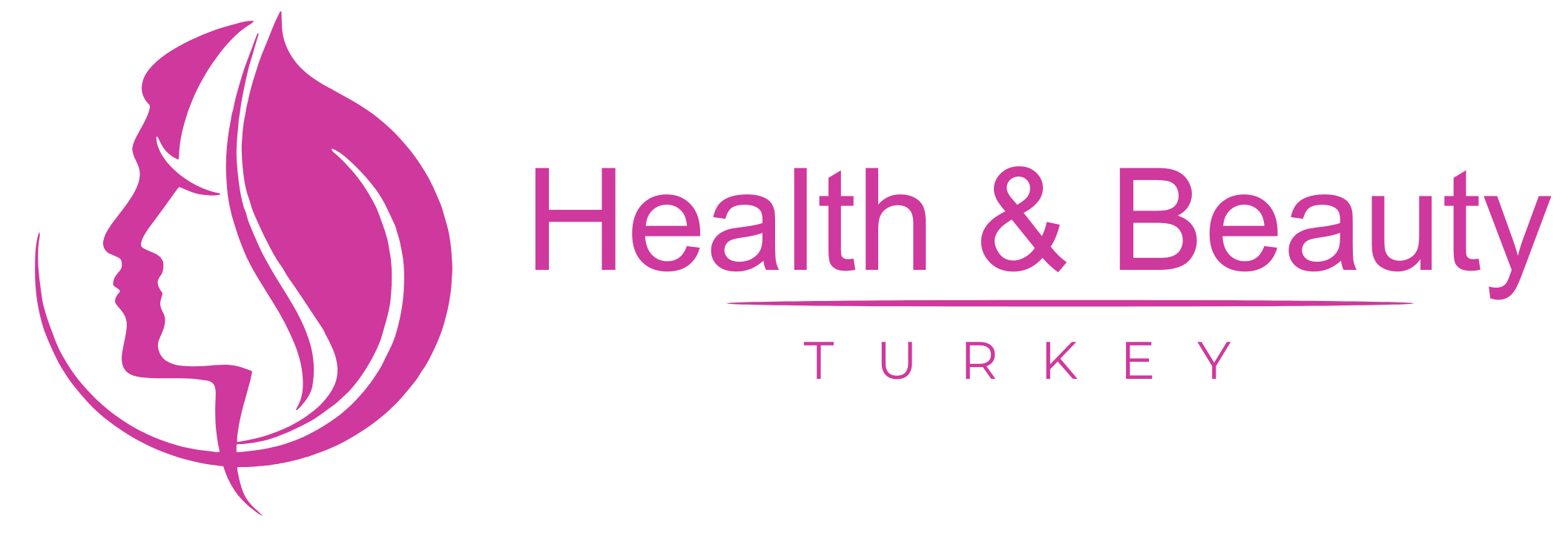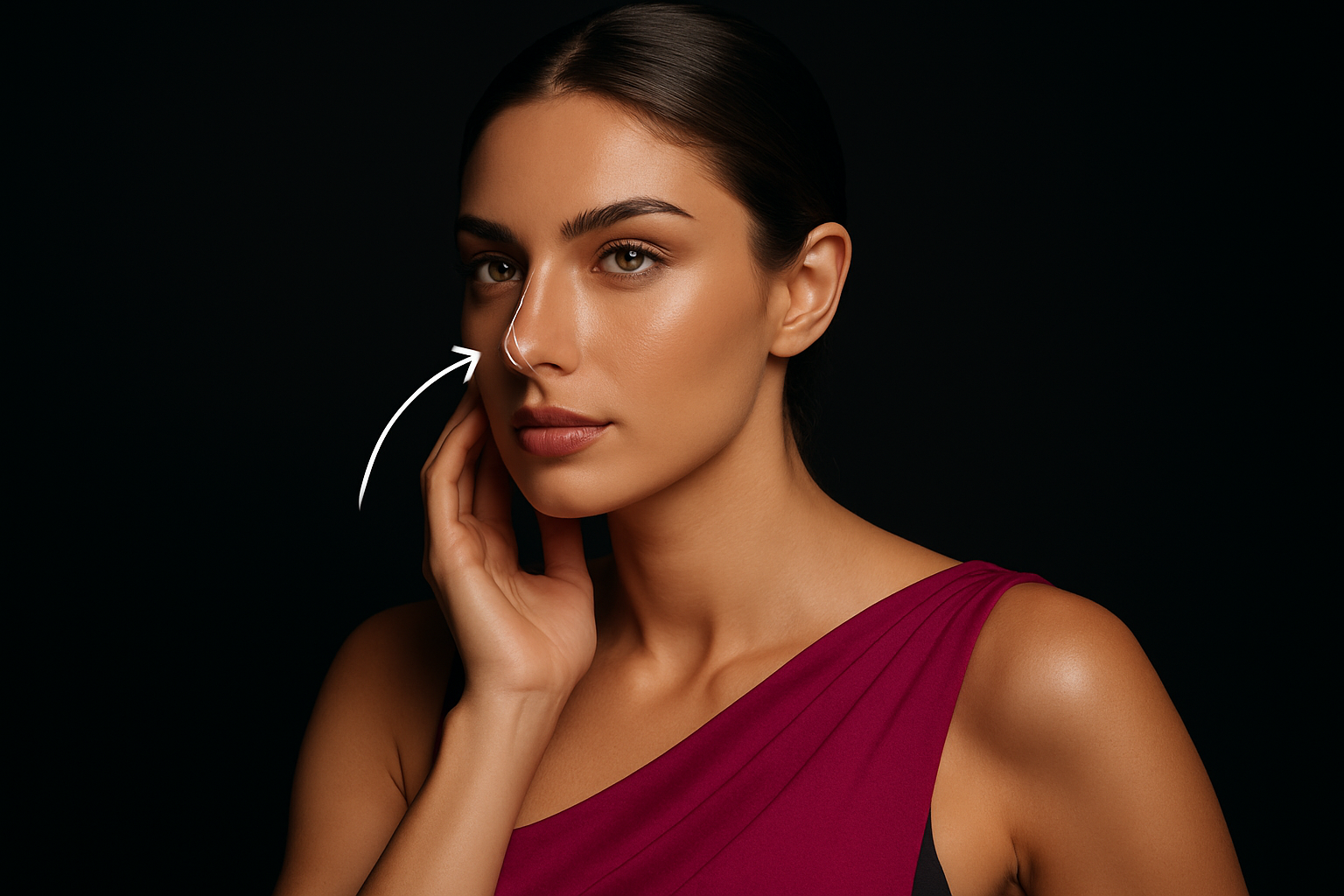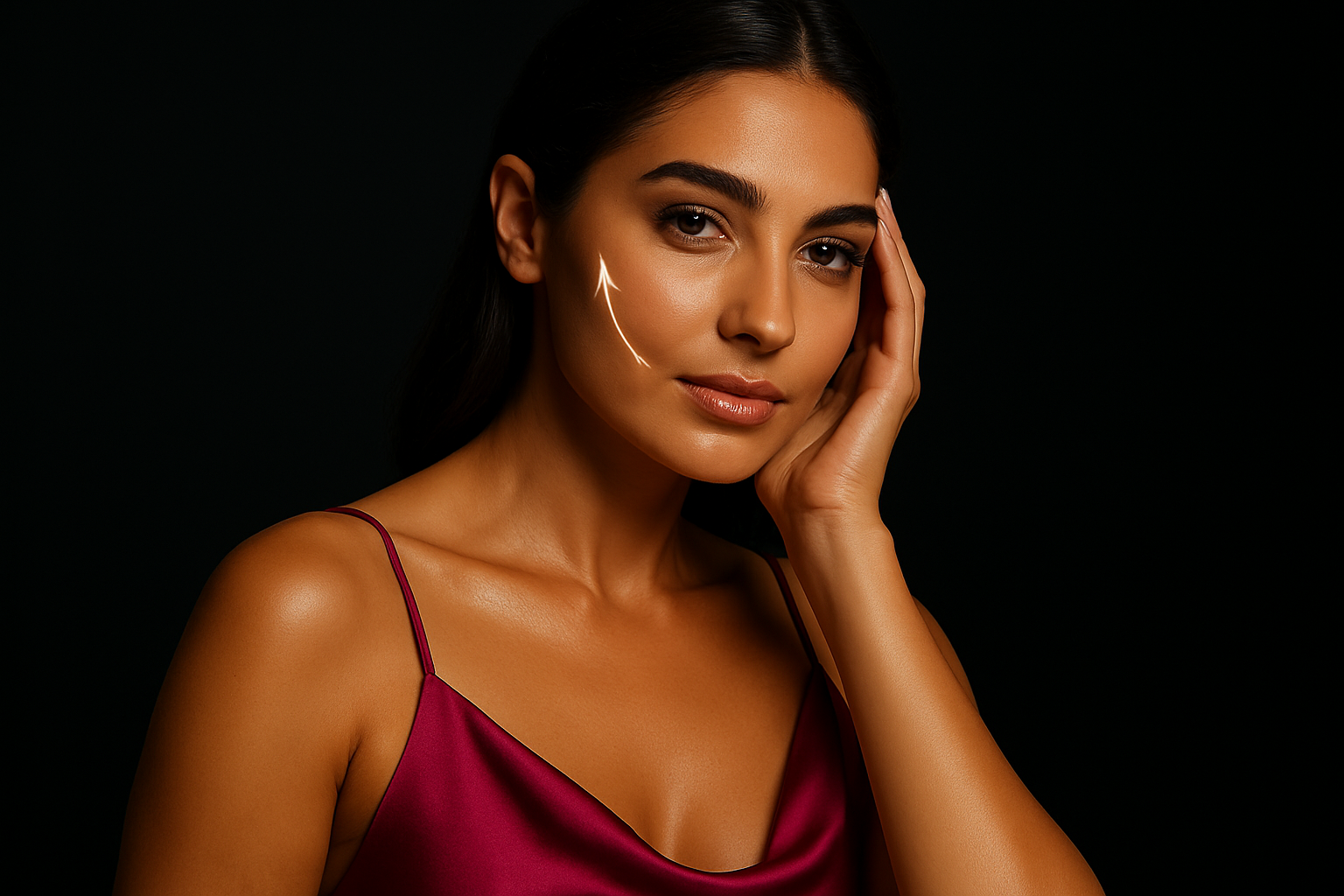Rhinoplasty: 8 Essential Things to Know Before Deciding in Turkey
Rhinoplasty, also known as nose reshaping surgery, is one of the most common and sought-after cosmetic procedures worldwide, particularly in Turkey, which has emerged as a leading destination in the field of cosmetic surgery.
Many seek this procedure to improve the aesthetic appearance of the nose, or to correct functional problems affecting breathing, or both. Despite significant advancements in surgical techniques, the anxiety and fear of potential outcomes and complications are natural for anyone considering this surgery.
At “Health & Beauty Turkey,” we fully understand these concerns and aim to provide you with comprehensive and transparent information so you can be fully prepared and confident when making your decision.
The pursuit of aesthetic perfection should not come at the expense of your safety. For this reason, Turkey, and our center specifically, sets very high standards to ensure the highest levels of safety and patient satisfaction.
Turkey is considered a global hub for medical tourism, attracting thousands of patients annually due to the expertise of its renowned doctors, the availability of the latest medical technologies, competitive prices compared to Western countries, and a unique cultural and tourist experience. In this article, we will review 8 key points you should know before undergoing rhinoplasty, focusing on what distinguishes the treatment experience in Turkey, especially with our integrated services at “Health & Beauty Turkey.”
Medical Background on Rhinoplasty: Understanding Challenges and Solutions
Before diving into the details of rhinoplasty, it is essential to understand the nature of the nose and its importance not only for aesthetic appearance but also as a vital function of the respiratory system.
The nose consists of a complex bony and cartilaginous structure, responsible for filtering, warming, and humidifying air before it reaches the lungs, in addition to its primary role in the sense of smell.
Reasons for Rhinoplasty:
The reasons that lead individuals to consider nose surgery vary and include:
- Aesthetic Reasons:
- Reducing or increasing the size of the nose to fit facial proportions.
- Modifying the shape of the nasal bridge (the upper part).
- Correcting a nasal hump (the prominent curve at the front of the nose).
- Narrowing or adjusting the shape of the tip (the end of the nose).
- Narrowing the nostrils.
- Correcting nasal asymmetry resulting from injuries or congenital deformities.
- Functional Reasons:
- Correcting a deviated septum that obstructs airflow.
- Improving breathing for individuals who experience difficulty breathing through the nose.
- Treating problems related to the sinuses.
- Repairing damage resulting from injuries or accidents.
Influencing Factors and Potential Risks:
Like any surgical procedure, rhinoplasty carries some potential risks, which experienced plastic surgeons strive to minimize as much as possible. These risks include:
- Infection.
- Bleeding.
- Difficulty breathing through the nose.
- Temporary or permanent numbness in the nose area.
- Changes in the sense of smell (often temporary).
- Undesirable scarring.
- Dissatisfaction with aesthetic results (requiring revision surgery).
- Perforation of the nasal septum (rare).
- Adverse reaction to anesthesia.
Understanding these risks, working with a qualified and experienced surgeon, and using the latest techniques significantly contribute to mitigating these possibilities.
Diagnosis and Case Assessment:
The assessment of the case begins with a detailed medical examination of the nose from the outside and inside, taking into account the patient’s complete medical history, including any previous surgeries, injuries, or chronic medical conditions. The assessment may also include:
- Visual Examination: To assess the size, shape, and proportion of the nose with facial features.
- Nasal Endoscopy: To examine the nasal passages and septum.
- Photographic Imaging: To take pictures of the face and nose from different angles, often used to illustrate expected changes.
- Imaging (Optional): The surgeon may request a CT scan in some cases to assess the internal nasal structure, especially if there are functional problems or a history of injuries.
Latest Developments and Research:
The field of rhinoplasty is constantly evolving. Among the most notable updates are:
- Open and Closed Rhinoplasty Techniques: These are the main surgical techniques. Closed surgery is performed through incisions inside the nose, while open surgery involves a small incision across the columella (the part between the nostrils). The surgeon chooses the most suitable technique based on the complexity of the case.
- Use of Grafts: The patient’s own cartilage (from the septum, ear, or rib) is used to support or reshape the nose, especially in complex cases or during revision surgery.
- Cryo-rhinoplasty Techniques: A recent technique aimed at reducing post-operative swelling and inflammation.
- Non-Surgical Rhinoplasty (Fillers): Using fillers such as hyaluronic acid to correct minor imperfections like a nasal hump or to modify the shape of the nasal tip, but these are temporary solutions and not a substitute for surgery.
- Robotics and Computer-Assisted Surgery: In some advanced procedures, these technologies can be used to enhance precision.
Ideal Candidates for Rhinoplasty: Who Are They?
Not every rhinoplasty is suitable for everyone. There are key criteria that determine if you are a good candidate for this surgery.
Who are the Ideal Candidates?
- Individuals with Realistic Expectations: They understand that the goal is to improve appearance, not achieve absolute perfection, and that results may take time to fully emerge.
- People Whose Facial and Nasal Bones Have Fully Developed: This is typically in the late teens or early twenties.
- Generally Healthy Individuals: Not suffering from serious chronic illnesses that could impede healing or increase surgical risks.
- Individuals Seeking to Improve the Shape or Function of Their Nose: Whether for purely aesthetic reasons, to correct a breathing problem, or a combination of both.
- Smokers and Non-Smokers: It is strongly advised to quit smoking for several weeks before and after surgery, as smoking negatively affects wound healing.
Who May Not Be an Ideal Candidate?
- Adolescents Whose Growth is Not Complete: Nasal structure may change as growth continues.
- Individuals with Unstable Chronic Illnesses: Such as uncontrolled heart disease, bleeding disorders, or severe autoimmune diseases.
- Individuals with Unrealistic Expectations: Expecting a drastic change or for their nose to look like a celebrity’s.
- Individuals with a History of Multiple Nose Surgeries: Results may be less predictable.
- Individuals with Certain Psychological Issues: Such as Body Dysmorphic Disorder.
Preparing for Rhinoplasty: Your Journey to Recovery
Good preparation is the key to success for any surgical procedure, and rhinoplasty is no exception. Preparation extends from before your travel to the procedures you will undertake upon arrival in Turkey.
Before Traveling to Turkey:
- Initial Consultation with the Center: Your condition will be assessed online or via direct contact. You may be asked to send clear photos of your nose and have a virtual meeting with the doctor.
- Basic Medical Examinations: You may be required to undergo some tests in your country, such as blood tests, cardiac evaluations, and coagulation tests, and to provide a comprehensive medical report.
- Stopping Certain Medications: You must consult your doctor about the medications you are taking, especially blood thinners (like aspirin and ibuprofen) and supplements that may increase bleeding risk. These should be stopped at a time specified by the doctor (usually one to two weeks prior).
- Quitting Smoking: As mentioned, this is crucial for optimal healing results.
- Healthy Nutrition: Maintaining a balanced diet rich in vitamins and minerals supports overall health.
- Psychological Preparation: Understanding the procedure, recovery expectations, and dedicating sufficient time to research and consultation.
Upon Arrival in Turkey:
- Reception and Transportation: You will be met at the airport and provided with comfortable transportation to your hotel.
- Final Medical Consultation: You will meet your doctor at their clinic for a thorough examination, discussion of the procedure details, answering all your questions, and developing the surgical plan. Detailed photos will be taken.
- Medical Examinations in Turkey: All necessary tests will be conducted to ensure you are ready for the operation, including blood tests, ECG, and blood pressure measurement.
- Explanation of Insurance Details: The details of the “Health Tourism Complication Insurance” we provide will be explained to ensure your peace of mind.
Rhinoplasty Procedure Steps: From Consultation to Recovery
The rhinoplasty procedure consists of several stages, including preparation, the procedure itself, and the post-operative period.
Before the Operation:
- Final Consultation: With the surgeon to precisely define aesthetic and functional goals, discuss the appropriate surgical technique, and clarify all risks and benefits.
- Medical Examinations: To ensure you are free from any health contraindications.
- Anesthesia: The appropriate type of anesthesia (general or local with sedation) will be chosen in agreement with the anesthesiologist. General anesthesia is most common for rhinoplasty.
- Final Instructions: Receiving precise instructions on what to eat or avoid immediately before the surgery.
During the Operation:
The operation is usually performed in a hospital or accredited surgical center. The surgery can take from one to three hours, depending on the complexity of the case.
- Surgical Techniques:
- Open Technique: The surgeon makes a small incision in the skin between the nostrils (the columella), in addition to incisions inside the nose. This allows the surgeon to lift the skin for a clear view of the nasal bone and cartilage structure, providing precise control over its reshaping.
- Closed Technique: All incisions are made inside the nostrils, leaving no visible external scars. This technique may be suitable for less complex cases.
- Reshaping the Structure: The surgeon modifies the bones and cartilage according to the plan. This may involve removing part of the bone or cartilage, or adding cartilage grafts to support or rebuild specific parts of the nose (such as lifting the nasal tip or straightening a deviation).
- Correcting the Septum (Septoplasty): If there is a deviated septum, it can be corrected at the same time as part of a functional rhinoplasty.
- Closing Incisions: Incisions are closed with absorbable sutures or special surgical threads.
- Dressings: A surgical dressing and/or external splint is applied to protect the nose and support it during the initial healing phase. Temporary nasal packs may be inserted to control bleeding and support the nasal septum.
After the Operation and Recovery Period:
- Immediate Recovery Phase:
- You will spend a few hours under observation in the recovery room.
- You may experience some pain, swelling, and bruising around the nose and eyes.
- You will be given pain relievers and other medications as needed.
- Rest and keeping your head elevated during sleep are recommended.
- Medical Follow-up:
- The healthcare team will monitor your condition to ensure there are no complications.
- Nasal packs (if used) are typically removed after one or two days.
- You will be given detailed instructions on wound care, when you can wash your face, and what foods to eat.
- Recovery Period:
- First Week: This is the most sensitive period. Most swelling and bruising will gradually subside. The nasal splint (if used) is usually removed after a week.
- First Month: Some minor swelling may persist, especially around the nasal tip. Strenuous physical activities and wearing heavy glasses should be avoided.
- Final Results: The final results of rhinoplasty may take up to a year or more to fully appear, as the internal tissues continue to adapt and heal.
Innovative Treatment Options in Turkey: Why “Health & Beauty Turkey”?
Turkey is distinguished by its adoption of the latest surgical techniques and provision of an advanced medical environment. At “Health & Beauty Turkey,” we are committed to offering the best in rhinoplasty.
Modern Techniques and Innovations:
- Micro-surgery: To enhance precision when dealing with delicate tissues.
- Use of 3D Imaging: To model the nose shape before surgery and plan with greater accuracy.
- Tissue Preservation Techniques: Focusing on preserving the nasal structure as much as possible to ensure natural and functional results.
- Focus on Rapid Healing: Through improved surgical techniques and integrated post-operative care.
Advantages of Treatment at “Health & Beauty Turkey”:
- World-Class Experienced Doctors: We work with a select group of plastic surgeons and ENT specialists with international certifications and extensive experience.
- Accredited Medical Facilities: We collaborate with hospitals and clinics equipped with the latest technologies and supervised by the Turkish Ministry of Health.
- Comprehensive and Integrated Care: We offer packages including airport reception, luxurious hotel accommodation, simultaneous translation, continuous medical follow-up, and optional tourist tours.
- Focus on Safety and Natural Results: Our goal is to achieve the perfect balance between aesthetics and function, while ensuring the highest safety standards.
- Health Tourism Complication Insurance: To provide additional protection and peace of mind.
Addressing Patient Concerns: Health Tourism Complication Insurance
We fully understand that any surgical procedure may carry concerns about unexpected complications. At “Health & Beauty Turkey,” we take your safety very seriously.
That is why we offer our patients “Health Tourism Complication Insurance” as part of our services.
Insurance Coverage:
- Hospital Treatment Coverage: This insurance covers the costs of hospital treatment in case of any complications requiring admission and medical care after the operation.
- Validity Period: The insurance is valid for up to 6 months from the date of the operation, providing you with long-term protection.
- Coverage for Travel and Accommodation Costs: If the patient requires revision surgery to correct complications, the insurance covers the necessary travel and accommodation costs for this purpose.
- Accredited Clinics: This insurance applies only to procedures performed in clinics and hospitals accredited by the Turkish Ministry of Health, ensuring you receive care in the best facilities.
This insurance is an expression of our commitment to providing a safe and reliable treatment experience, and to give you complete peace of mind during your treatment journey with us.
Practical Tips for Patients: A Comfortable Treatment Journey
In addition to medical preparation, there are other important aspects to ensure a positive experience.
Travel Tips:
- Early Booking: It is advisable to book flight tickets and accommodation in advance, especially during peak seasons.
- Flexible Tickets: Obtain changeable travel tickets in case your plans need adjustment.
- Luggage: Bring comfortable clothing, especially items that open from the front, to avoid pressure on the nose.
- Familiarize Yourself with the Culture: Learn about Turkish customs and traditions to enhance your experience.
Psychological Preparation:
- Communicate with the Doctor: Do not hesitate to ask any question or voice any concern, no matter how small it may seem.
- Support Groups: It may be helpful to read about the experiences of other patients or join online forums.
- Patience: Remember that final results take time, and the recovery period requires patience.
Recovery and Lifestyle Tips After Treatment:
- Follow Doctor’s Instructions Precisely: This is the most important step to ensure proper healing.
- Proper Nutrition: Eat healthy, vitamin-rich foods and drink sufficient amounts of water.
- Avoid Strain: Minimize strenuous activities and intense sports during the recovery period.
- Sun Protection: The nose may be sensitive to sunlight after surgery, so always use sunscreen.
- Gradual Return to Activities: Start with light activities and gradually return to your daily routine.
Rhinoplasty Cost in Turkey
When considering rhinoplasty in Turkey, price is an important factor for many patients. The cost of the procedure varies based on several factors, and it is important to understand these factors to grasp the price range.
Factors Affecting Rhinoplasty Cost:
- Surgeon’s Experience and Specialization: Surgeons with a global reputation and extensive experience may charge higher fees.
- Case Complexity: Procedures requiring complex modifications, revision rhinoplasty, or those involving septal correction will incur higher costs.
- Technique Used: Some techniques may require special equipment or longer operating times, affecting the cost.
- Hospital or Clinic Fees: Including operating room usage, nursing staff, and equipment.
- Type of Anesthesia: General anesthesia is often more expensive than local anesthesia.
- Hospital Stay Duration: For most rhinoplasty cases, a long stay is not required, but costs may increase if additional monitoring is needed.
- Additional Services: These include airport reception, hotel accommodation, transportation, translation services, and tourist tours.
- Geographical Location: Prices may vary slightly between major Turkish cities.
Approximate Price Range in Turkey:
Based on the latest available online information, the cost of rhinoplasty in Turkey generally ranges between $2,500 USD and $5,000 USD.
Please note that these prices are approximate averages and may increase or decrease based on the factors mentioned above. At “Health & Beauty Turkey,” we strive to offer comprehensive packages at competitive prices, ensuring quality of service and patient safety. To receive an accurate quote tailored to your situation, we invite you to contact us for a free consultation.
Why Choose “Health & Beauty Turkey”?
Choosing the right destination and surgeon is a crucial decision. At “Health & Beauty Turkey,” we offer an experience that combines medical excellence with human care.
- Our Doctors’ Expertise: Our surgeons possess many years of experience in performing various types of rhinoplasty and stay updated with the latest global techniques.
- Integrated Support: We provide “door-to-door” service; from picking you up at the airport, arranging comfortable accommodation, ensuring a personal interpreter who speaks your language, to even medical follow-up after your return home.
- Safety and Trust: We adhere to the highest safety standards, collaborate with licensed medical facilities, and provide Health Tourism Complication Insurance for your peace of mind.
- Holistic Vision: We care for you as an individual, understanding that your treatment journey extends beyond the surgery to include your personal and tourist experience.
Rhinoplasty is an investment in your appearance and self-confidence. In Turkey, you will find an ideal environment to achieve these goals safely and efficiently. At “Health & Beauty Turkey,” we combine advanced medical expertise, the latest technologies, and comprehensive services to ensure your treatment journey is successful and comfortable.
Your full understanding of the procedure, thorough preparation, and choosing the right center are all factors contributing to achieving the desired results. We assure you that your safety and comfort are our top priorities, and the Health Tourism Complication Insurance is one of our guarantees to you.
Do not hesitate to take your step towards a better appearance and easier breathing. Contact our medical representative today for a free and comprehensive consultation, and begin your transformation journey in Turkey, the land of beauty and medical innovation.




